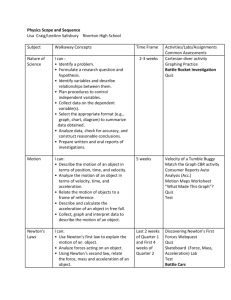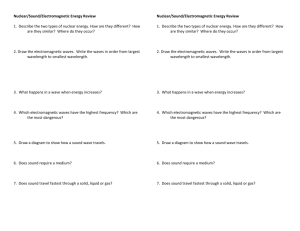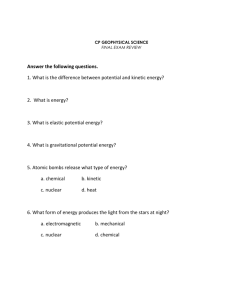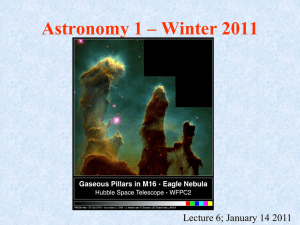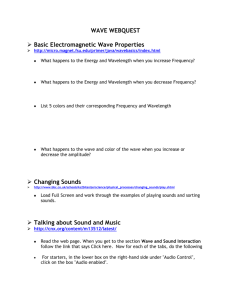January Exam Review - Mentor Public Schools
advertisement
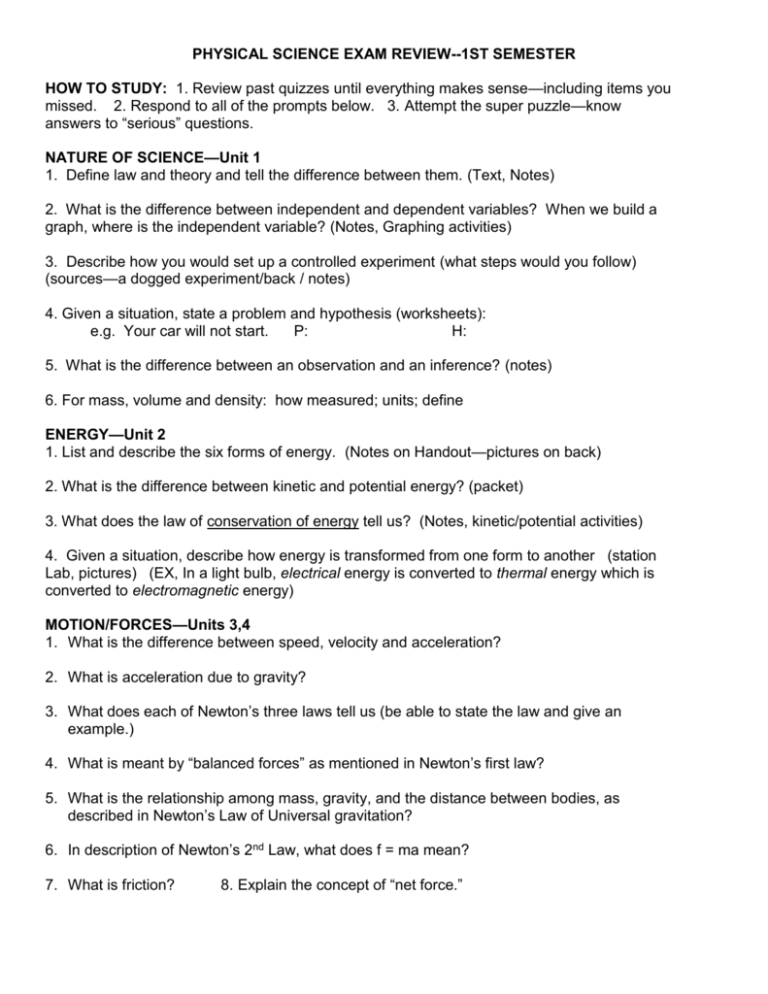
PHYSICAL SCIENCE EXAM REVIEW--1ST SEMESTER HOW TO STUDY: 1. Review past quizzes until everything makes sense—including items you missed. 2. Respond to all of the prompts below. 3. Attempt the super puzzle—know answers to “serious” questions. NATURE OF SCIENCE—Unit 1 1. Define law and theory and tell the difference between them. (Text, Notes) 2. What is the difference between independent and dependent variables? When we build a graph, where is the independent variable? (Notes, Graphing activities) 3. Describe how you would set up a controlled experiment (what steps would you follow) (sources—a dogged experiment/back / notes) 4. Given a situation, state a problem and hypothesis (worksheets): e.g. Your car will not start. P: H: 5. What is the difference between an observation and an inference? (notes) 6. For mass, volume and density: how measured; units; define ENERGY—Unit 2 1. List and describe the six forms of energy. (Notes on Handout—pictures on back) 2. What is the difference between kinetic and potential energy? (packet) 3. What does the law of conservation of energy tell us? (Notes, kinetic/potential activities) 4. Given a situation, describe how energy is transformed from one form to another (station Lab, pictures) (EX, In a light bulb, electrical energy is converted to thermal energy which is converted to electromagnetic energy) MOTION/FORCES—Units 3,4 1. What is the difference between speed, velocity and acceleration? 2. What is acceleration due to gravity? 3. What does each of Newton’s three laws tell us (be able to state the law and give an example.) 4. What is meant by “balanced forces” as mentioned in Newton’s first law? 5. What is the relationship among mass, gravity, and the distance between bodies, as described in Newton’s Law of Universal gravitation? 6. In description of Newton’s 2nd Law, what does f = ma mean? 7. What is friction? 8. Explain the concept of “net force.” WAVES, SOUND AND ELECTROMAGNETIC ENERGY—Units 5, 6 1. What is a wave? 2. Given a diagram of a wave, be able to identify: crest, trough, amplitude, wavelength. 3. What is the frequency of a wave? EX: compare the following waves in terms of frequency, amplitude, wavelength. 4. What is the difference between mechanical (e.g. sound) and electromagnetic (e.g. light) waves? (Aim 14) 5. Recognize the forms of energy shown on the electromagnetic spectrum. Compare them in terms of: wavelength, frequency, photon energy 6. What is the difference among diffraction, refraction and reflection? Apply each to light— what happens? 7. What does the Law of Reflection tell us? 9. What is the Doppler Effect? THERMAL ENERGY/STATES OF MATTER—Unit 7 1. What is matter? (Notes/text) 2. What is the kinetic theory of matter? (notes, text) 3. Be able to describe how thermal energy is transferred by conduction, convection and radiation. (notes, WS) 4. Be able to identify and explain what happens during the five phase changes e.g. melting = solid to liquid (Phase Changes Study Guide) 5. key idea: When we add energy (e.g. heat) to a substance, the particles move _____________ and __________ ______________. (PC study Guide) 6. Describe the general properties of solids, liquids and gases. (Refer to the handout, “Comparison of 3 phases of matter.” 7. Examine a “phase changes graph” such as you built during the phase changes lab. What is happening at each point on the line?




